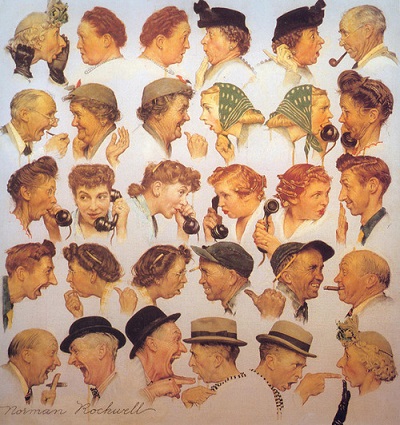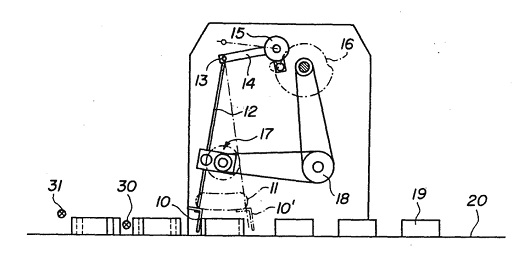|
Ever play that game as a kid where you whisper something in the next kid’s ear, and she whispers it to the next kid, and on down the line? When the first and last kids’ renditions of what was whispered are compared, they’re vastly different. Part of the reason for this is that when whispering from ear to ear no visual cues as to the message’s content are present. There’s a reason that the world’s leading language learning systems use visual images to facilitate learning. It’s the same reason that individuals who move to a foreign country can quickly acquire the new language. Visual cues inform the brain in a way that words alone cannot. Words and images are intimately linked within the human brain. If only words are employed, perceptions are bound to be less than exact between individuals. This can present a problem in the courtroom, when the precision of received messages is of the most crucial importance. How can attorneys address this problem to produce a message which has the highest likelihood of being perceived identically by all jurors? By delivering their message through visual images. Studies show that when visual images are provided, perception between individuals is more uniform. Several weeks ago a two dimensional (2D) patent drawing was introduced in our blog series. Granted, it was a visual image, and yet a complete understanding of how the machine actually operated remained a mystery to most. Then we transformed that 2D image into an attention-grabbing 3D animation. By doing so, all gaps in understanding were closed. Sometimes, particularly with complex things, only a moving representation will provide the required clarity. Next week we’ll further examine how limitations in perception affect what goes on in the courtroom. In the meantime I invite you to ponder the impact of this statement, made by the country’s leading authority in the field of jury behavior and trial strategy, Dr. Donald E. Vinson: “Several studies on attention span indicate that even persons who are intensely interested in the topic at hand cannot maintain a high level of attention for more than 20 minutes.” ___________________________________________ |
Archive for June, 2013
Courtroom Animations – Perception: Images vs. Words
Sunday, June 23rd, 2013Courtroom Animations – Bringing Patents to Life
Monday, June 17th, 2013|
Movies, that is 3D animations, are moving into the courtroom, and intended messages are made clearer than ever as a result. If a picture is worth a thousand words, how much more effective is a moving 3D image? We’ve been viewing a static two-dimensional representation of a machine for the past two blogs. Have you been able to figure it out yet? Here it is again:
Would it help you to understand if I identified it as a piece of food manufacturing equipment equipped with a rake that aligns cookies on a conveyor belt? Would that verbal description allow you to “see” in your mind’s eye how it operates? Unless you had the right technical background, it’s unlikely. Last week we introduced the verbiage person of ordinary skill in the art as a term widely used within patent litigation. This person is said to have the ability to interpret and understand patent drawings, and they typically possess a technical and/or scientific background. But what if participants in a legal proceeding lack this background? Technical experts are often hired on as consultants to attorneys, and in some instances, judges, when clarification is required. These experts provide technical expertise and tutorials on the technology involved in complex cases, and it happens with regularity when the operation of a patented device is in question. By employing 3D animations the expert can show how the device operates, rather than attempt to explain it using the technical language of their profession. The expert works closely with an animation artist to create the animation, providing the technical information that the animator will use to create the fully functional model. Animators do not typically have the technical background to accomplish this on their own and will require an ongoing dialog with the technical expert to create the animation. And now the moment we’ve all been waiting for. Here is our static image brought to life through animation:
The animation commands the viewer’s attention and holds their interest, even if they have no background in engineering or science, and the device’s function is now made clear. It must be noted that in the patent drawing, part of the mechanism lies in front of a steel divider plate and part behind, but for purposes of clarity the entire mechanism has been shown to the front of the plate. Now there’s no doubt as to how the parts move together to even up the rows of cookies on the conveyor belt. Next week we’ll talk about juries, perception, and the advantages of using courtroom animations when at trial. |
Patent Drawings – “Ordinary Skill in the Art”
Sunday, June 9th, 2013|
Last week I introduced this illustration as a typical patent drawing and asked if you could decipher the riddle of its functionality.
Patent drawings are static, two dimensional (2D) representations of proposed inventions which are meant to be manufactured in three dimensions (3D). As such they present a lot of complex information on a flat page. If you don’t have a clue as to what this machine is, I guarantee you’re not alone. The average person wouldn’t. There’s a bunch of lines, shapes and numbers, but what do they signify? How are they meant to all come together and operate? As a matter of fact, the average person isn’t meant to understand patent drawings. That’s because they’re not what patent courts have defined as a person of ordinary skill in the art, a peculiar term which basically means that the Average Joe or Josephine isn’t meant to be able to interpret them. Rather, the interpretation of patent drawings is left to individuals with specialized skills and training, a particular educational background and/or work experience. These individuals are typically able to view a static 2D image and visualize how the illustrated device moves, how it operates. Those said to fall within the court’s definition as having ordinary skill in the art are in fact often engineers and scientists. Since the average person does not have a background in engineering and science, it can be challenging for patent attorneys to present their cases in the courtroom, particularly when relying on 2D representations alone. That’s where animations come in. Next time we’ll use the magic of animation to transform our cryptic 2D patent illustration into a functional 3D animation of a machine whose operation is easily understood by the average person. ___________________________________________ |
Patent Drawings
Sunday, June 2nd, 2013|
I remember the first time I saw a blueprint. It was during high school shop class where we learned how to use power tools to make the wooden chairs, tables, and chests shown in blueprints. I was completely confused. The odd paper and blue print, coupled with the liberal use of unfamiliar symbols, dashes and dots, and what appeared to be a mind boggling amount of detail was enough to start me in a cold sweat. For many people, patent drawings are a lot like that first blueprint I saw. As a static two-dimensional (2D) representation of an operational device which is often complex, they present an immense amount of information on a page. The average person would be hard pressed to interpret them, and in fact, as we’ll learn later, they aren’t supposed to be able to. We’ve been talking about patent basics in this series of blogs, and we’ll continue that discussion in the following weeks with a concentration on patent drawings. In the meantime, here’s one to ponder. When you look at a patent drawing like the one below, what do you see? What do you think this thing is and what is it supposed to do? We’ll find out next week…
___________________________________________ |





